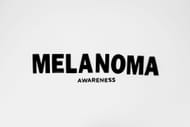There are different types of skin cancer that develop depending on the types of cells that they begin in. This is because your skin is made up of different types of cells and when the DNA within them gets damaged, they tend to become cancerous.
However, these types of skin cancers do not matter and they should be diagnosed and quickly treated to avoid any kind of complications.
In this article, we will discuss the different types of skin cancer along with the symptoms and possible treatments.

Types of Skin Cancer
Here are some of the most common types of skin cancer that you should be aware of:
1. Basal Cell Carcinoma
Basal cell carcinoma tends to be amongst the most common types of skin cancer that does not spread to other areas of the body. However, when left untreated, they can penetrate into bones and nerves.
The risk factors for basal cell carcinoma include:
- High exposure to indoor tanning or sun exposure
- History of skin cancer
- Being male or over 50
- Having a weak immune system, skin inflammation, and chronic infections
- High exposure to industrial compounds
Signs of Basal Cell Carcinoma
- Round and flesh-colored growth
- Pearl-like bump
- Pinkish patch on the skin
- Sore that heals and reopens again
2. Squamous Cell Carcinoma
Squamous cell carcinoma is amongst the second most common types of skin cancer, which begins in the outer part of the epidermis. This also usually begins in highly sun-exposed areas like hands, lips, face, neck, and ears.
The risk factors for squamous cell carcinoma include:
- Having light eyes or freckles
- Having a red or blond area
- History of skin cancer or sunburns
- Having a weak immune system or a genetic disorder
Signs of Squamous Cell Carcinoma
- Firm and red bump
- Sore that heals and reopens again
- Lesion with crusted or scaly surface
3. Melanoma
Melanoma is one of the most serious types of skin cancer, which easily gets spread when they are not treated early. This deadly cancer starts in your melanocytes, which are the cells within the epidermis that cause pigment.
The risk factors for melanoma cancer include:
- Regularly getting exposed to tanning beds or sunlight
- Having fair skin, freckles, or light eyes.
- Having blond or red hair.
- Family history of melanoma
- Having blistering sunburns in the past
- Living in areas that are close to or equator or at high elevation
- Having many moles on the body
- Weak immune system
Melanoma cancer can begin anywhere in your body, but generally, it affects the area with increased sun exposure like the face, arms, and legs. It can also develop on your fingernail beds, soles of your feet, and palms of your hands.
Signs of Melanoma Cancer
- A mole that changes in size and colour
- Bleeding moles
- Painful lesion
- Asymmetrical mole
- Dark spots over your limbs
- Large mole
4. Merkel Cell Carcinoma
This is one of the rare types of skin cancer that starts when merkel cells start growing out of control. They tend to grow quickly and are hard to treat if they spread through your body.
Merkel cell carcinomas can also begin anywhere in your body, but they generally affect areas that are more exposed to the sun like arms, neck, and face. They might look like firm purple, pink, or red bumps, which can also open up to sores or ulcers.
The risk factors include:
- Having a light skin
- Getting exposed to excessive amounts of sun, tanning beds, or ultraviolet light
- History of skin cancers
- Weak immune system
- Age groups above 50
5. Kaposi Sarcoma
This is one of the rarest types of skin cancer caused by the human herpesvirus 8 and forms in the blood vessels of the skin. This usually affects people with weakened immune systems like AIDS, young men living in Africa, and men with Jewish and Mediterranean heritage.
They can cause purple or red patches on the skin or cause lesions on your digestive tract, mouth, or lungs.

Treatment of Skin Cancer
Cancer treatment depends on the stage of cancer as sometimes a biopsy alone can get rid of all cancer tissues. Other treatments include cryotherapy, excisional surgery, Mohs surgery, radiation therapy, chemotherapy, immunotherapy, curettage, electrodesiccation, and photodynamic therapy.
The aforementioned article discusses the types of skin cancer that you should be aware of along with the signs and risk factors.
